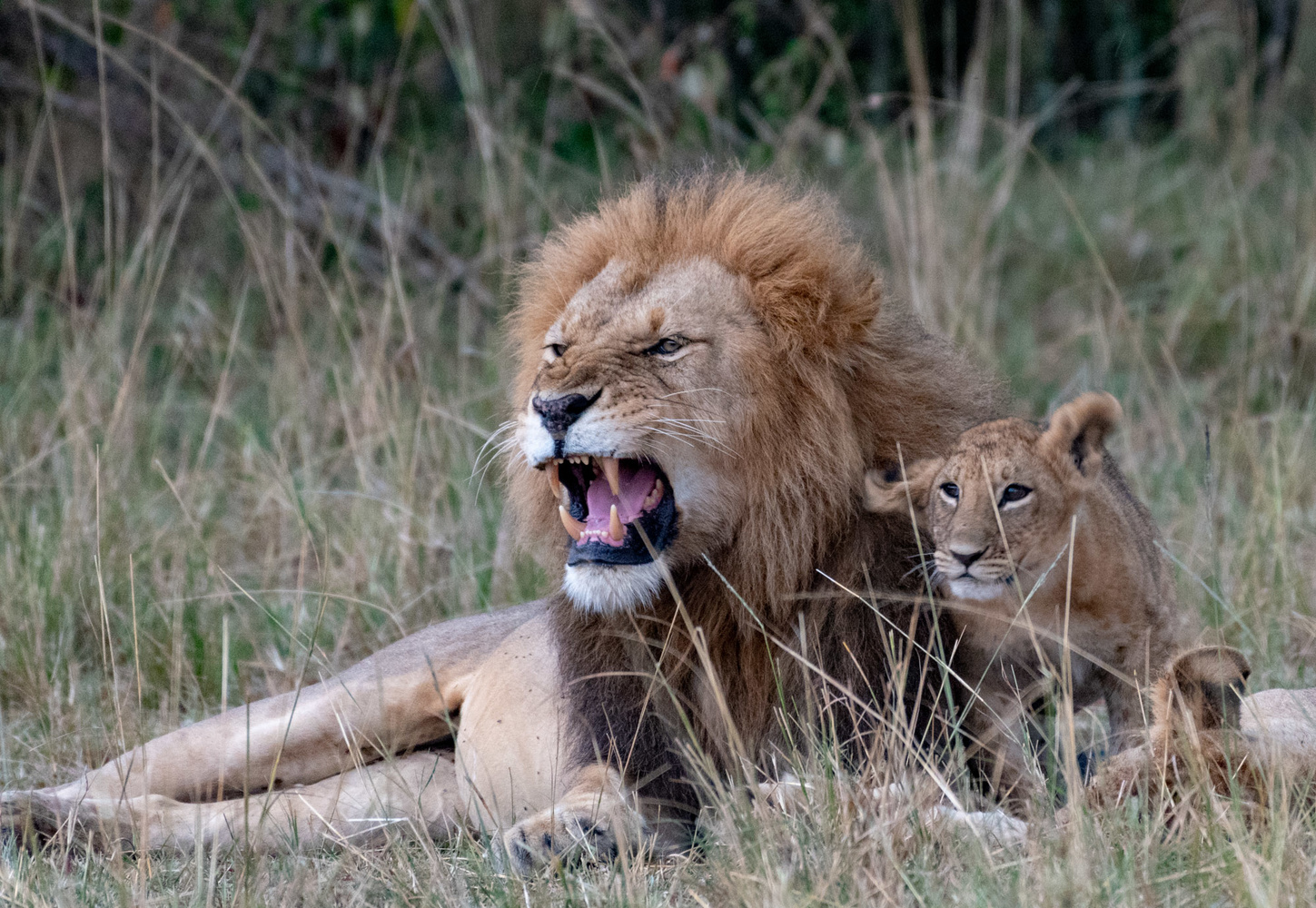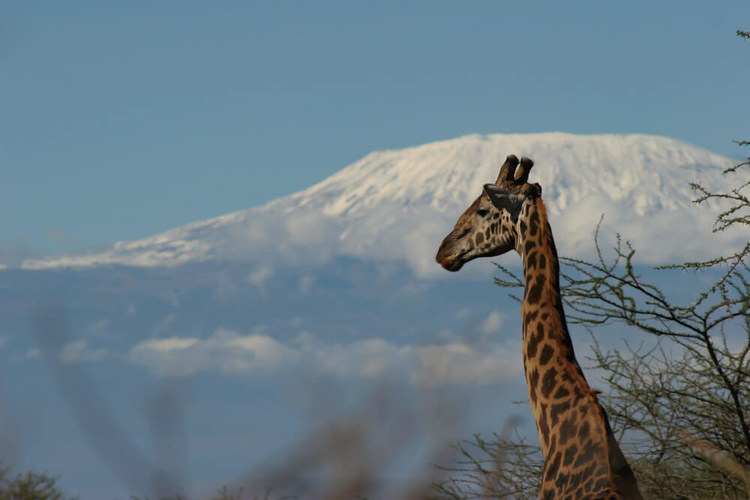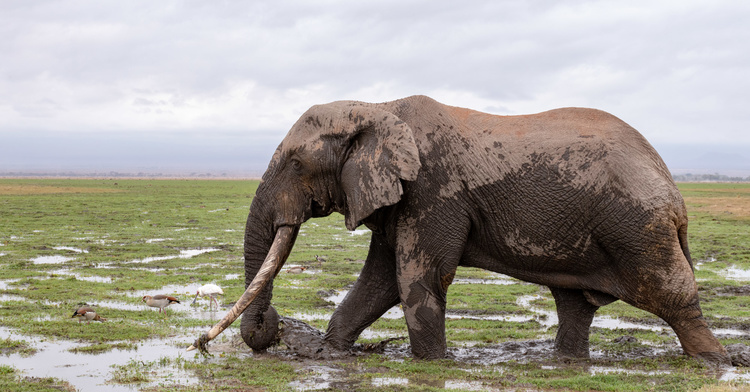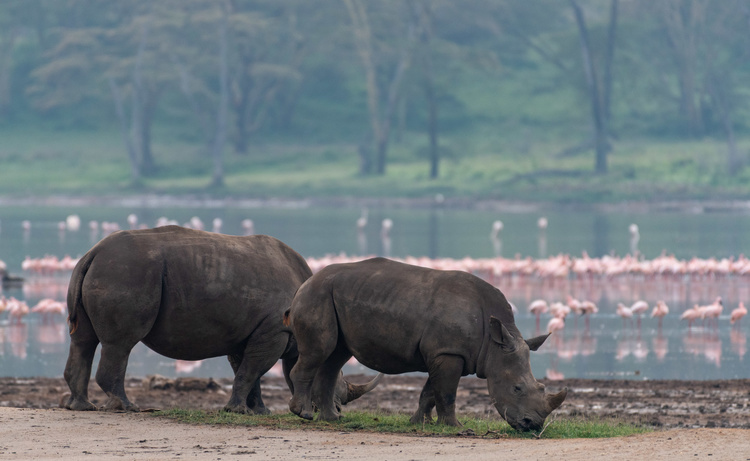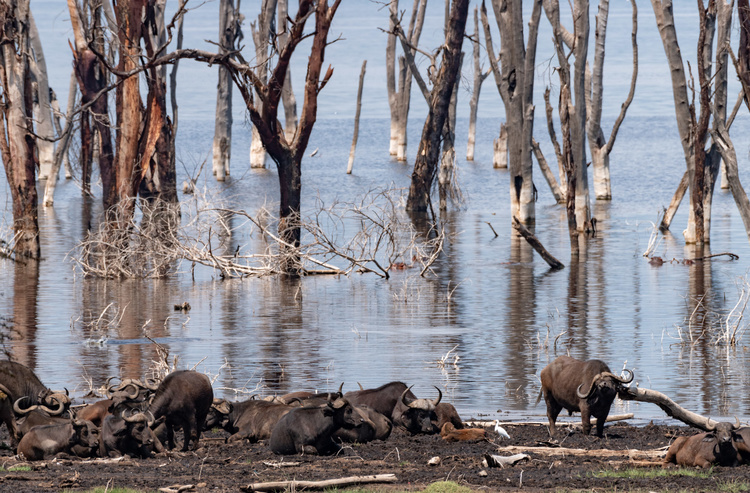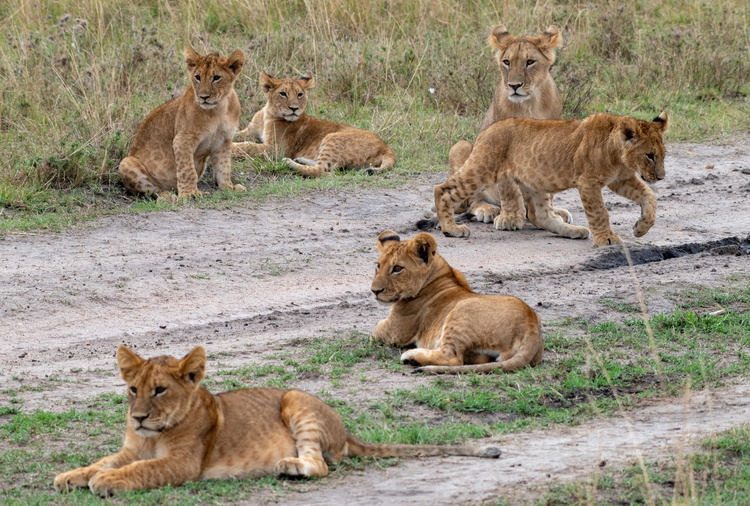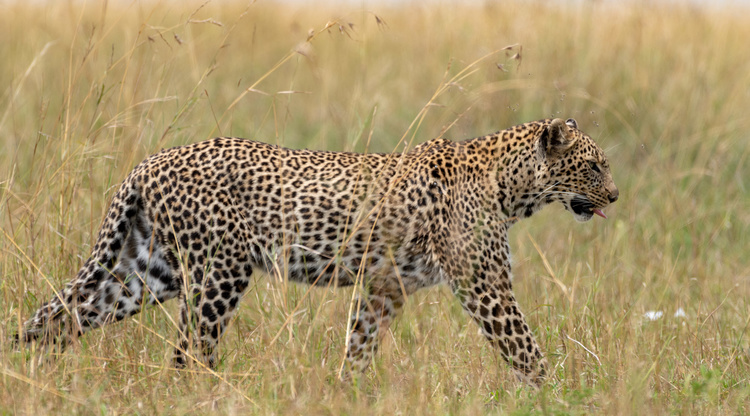Safari Amboseli, Nakuru & Masaï Mara
From US$4,911 per person
Itinerary
-
Day 1Nairobi - Amboseli
Early departure from Nairobi to try to avoid the many traffic jams that slow down travel to the city gates. Arrive for lunch in the park. Located at the foot of Mount Kilimanjaro, on a clear day you'll enjoy a superb view of the snow-covered summit.
On the border with Tanzania, Amboseli National Park is one of Kenya's oldest national parks, but also one of its smallest. Nevertheless, it remains one of the most beautiful in the country. After lunch, first game drive in the park, until sunset. Overnight in the park. -
Day 2Amboseli
A full day in this photogenic park, morning and afternoon game drives. Amboseli National Park is often referred to as “The home of Elephants’ some of the largest Elephant herds are found here.
The park takes its name from Lake Amboseli, an immense dry basin with cracked ground. The clouds of dust rising from the lake contrast with the lush green vegetation of wetlands such as Enkongo Narok Swamp.
The park is also home to vast groups of zebras, wildebeests, giraffes, buffalos, hippos and antelopes, lions, leopards, cheetahs, rhinos and many species of plain game. -
Day 3Amboseli - Lake Nakuru
Morning departure from Amboseli for the southern suburbs of Nairobi, then north to Nakuru Park in the folds of the Rift Valley. Picnic lunch on the way. Late afternoon: first game drive. Lake Nakuru is frequented by flamingos and pelicans. The park is home to a rich fauna including Rothschild's giraffe, white rhinoceros (easy to spot) and reed antelope. Dinner and overnight at Sarova Lion Hill Lodge inside the park.
-
Day 4Lake Nakuru - Masai Mara
Pre-breakfast game drive in Nakuru, then return to the lodge for full breakfast, check out, and depart for Masai Mara with a packed lunch.
The pleasant road climbs steadily in altitude, and offers beautiful mountain landscapes, folds of the rift valley. Numerous cultivated plots dot the road before descending to Narok and the Masai Mara region.
Covering some 1,510 km² along the border with Tanzania, it is by far the country's best-known and most visited game reserve. A World Heritage Site, the Masai Mara is the Kenyan extension of Tanzania's Serengeti National Park. The reserve's name is derived from the river that flows through it, Mara, and the people who live there, the Masai. It is home to a rich fauna, with 2.5 million herbivorous mammals that delight the reserve's predators. Twice a year, the animals migrate from one reserve to another in search of the best grazing. Wildebeests and zebras gather in their millions during this transhumance. The group can be dozens of kilometers long! Late afternoon game drive followed by dinner and overnight. -
Day 5Masai Mara
The Mara River means “spotted” river in the Masai language. It reflects the savannah landscape dotted with umbrella acacias, green and russet grasses and silver-leaf croton bushes. Since colonial times, the park has held its reputation as one of the world's finest wildlife observatories. The reserve has a large population of lions, leopards, hyenas and jackals. The savannah is home to some 450 bird species, including ostriches, waders and rare, majestic eagles. Second great day on safari through the Mara, one of Africa's top 5 wildlife reserves. All of Africa's great fauna is represented here, and predators are plentiful.
-
Day 6Masai Mara
Last great day of safari in what could be called the African Eden. If you wish, your guide can arrange a picnic lunch for you to enjoy under an acacia tree in the heart of the bush.
In the morning, enjoy a superb optional hot-air balloon flight over the savannah (Flight can be arranged locally and payable directly). -
Day 7Masai Mara - Nairobi
After breakfast, you leave the Masai Mara region. Drive through the town of Narok, where the street vendors provide a lively backdrop. Continue on to Nairobi, arriving in the early afternoon and ending our services.
Contact us if you are planning an extension to Mombasa or the Indian Ocean coast.
Prices
Price conditions for your safari in Kenya
Price Per Person
Price Include
- Transport in a private tour mini-bus with a pop-up roof or 4x4 (depending on the option chosen)
- Unlimited kilometers
- Services of our professional English-speaking driver guide
- National parks entry fees
- Drinking Water (refer below)
- Hotel accommodation on Full Board basis sharing room (refer below)
Not Included in the Price
- Visa fee
- International flight
- Transfers where not applicable
- Travel and cancellation/medical insurance cover
- Hotel accommodation in Nairobi (please consult us)
- Single Room (under single Supplement terms)
- Beverages, Alcohol, Spirits
- Reusable Water Bottle for refilling (Very Important)
- Photographic fee with the local people
- Eventual tips
- Any items or expenses of personal nature
- Any other items not mentioned in the inclusions
Travel info
Here is some practical information for your safari in Kenya
Accommodation during your safari in Kenya
- Sentrim amboseli (outside park)
- Sarova Lion Hill lodge (inside Park)
- Sentrim Mara lodge (inside Park)
Transport in safari
Other Useful Information to travel in Kenya
- No plastic bags in to Kenya
- No plastic bottles in the Game Parks and Reserves
- Carry your COVID Vaccination Certificate
Entry requirements for Kenya
- Mandatory passport valid 6 months after your return date
- Since January 4, 2024, entry to Kenya has been subjected to an electronic travel authorization (ETA), in place of a visa.
Sanitary conditions for Kenya
- Yellow fever
- Malaria
- Consult your GP or an International Vaccination Centre to assess your state of health and receive health recommendations, particularly concerning vaccinations
- Set up a personal pharmacy
Climate
What to Pack for your safari in Kenya
- Good quality sandals
- Good quality light walking shoes
- Casual shoes for evenings
- Fleece jacket or warm sweater
- Practical safari jacket
- T-shirts
- Short and long sleeve shirts or blouses
- Shorts and long casual trousers
- Casual light dresses or skirts
- Enough underwear, socks and hankies
- Bathing suit
- Toiletries, lip balm and scarves
- Miniature wet towel and Kleenex (enough)
- Small backpack
- Small reusable water bottle
- Small flashlight or headlamp (its handy)
- Safari hat or cap
- Personal medication
- Important Quality mosquito/insect repellent (for body)
- Waterproof sun blocker cream/sunscreen
- Good quality sunglasses
- Binocular and Guidebooks
- Camera with extra battery and memory card

